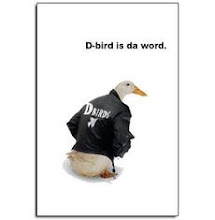In re-imagining our library over the last while, we've changed a bunch of things, and tried new things, and looked at what's been working, and tweaked, and.... I guess we've been designing - experiences, spaces, signage, all sorts of aspects of our school library.
.
Helene Blowers has a brilliant entry on her blog, LibraryBytes about 'thinking like a designer'. And I quote:
.
In reading these tips, I think it’s important to recognize that these tips aren’t really related to the craft of “designing” stuff. Instead they’re related to the craft of “thinking about design” and as Garr* also notes most can be applied to any profession.
.
1) Embrace constraints. Constraints and limitations are wonderful allies and lead to enhanced creativity and ingenious solutions that without constraints never would have been discovered or created.
.
2) Practice restraint. Any fool can be complicated and add more, it takes discipline of mind and strength of will to make the hard choices about what to include and what to exclude.
.
3) Adopt the beginner's mind. As the old saying goes, in the expert's mind there are few possibilities, but for one with the beginner's mind, the world is wide open.
.
4) Check your ego at the door. This is not about you, it's about them (your audience, customer, patient, student, etc.). Look at the problem from their point of view -- put yourself in their shoes.
.
5) Focus on the experience of the design. It's not the thing, it's the experience of the thing.
.
6) Become a master storyteller. Often it's not only the design — i.e., the solution to a problem — that is important, but the story of it.
.
7) Think communication not decoration. Design — even graphic design — is not about beautification. Design is not just about aesthetics, though aesthetics are important. More than anything, design is about solving problems or making the current situation a little better than before.
.
8) Obsess about ideas not tools. Tools are important and necessary, but they come and go as better tools come along. Obsess instead about ideas. Good advice is to go analog in the beginning with the simplest tools possible.
.
9) Clarify your intention. Design is about choices and intentions, it is not accidental.
.
10) Sharpen your vision & curiosity and learn from the lessons around you. Good designers are skilled at noticing and observing. They are able to see both the big picture and the details of the world around them.
.
Bonus:
.
(11) Learn all the "rules" and know when and why to break them.
.
Read the full post to get more of Garr’s insights to each of the tips above. There’s some great thoughts that I think can be applied to many areas of library services. You don’t have to be a designer to think like one. You just have to be willing to embrace some new approaches.
.
*This is based on work by Garr Reynolds: 10 tips on how to think like a designer, from his blog Presentation Zen. He expands on each of these points - it is worth reading his thoughts.
.
Now what else can we design and change and improve....?
.
Cheers
.
Ruth
.
Subscribe to:
Post Comments (Atom)





















No comments:
Post a Comment